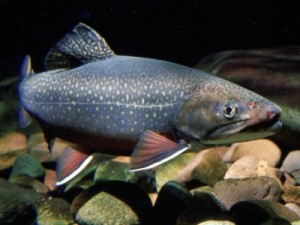
A recently published U.S. Geological Survey study combines climate change and invasive species research by examining how native brook trout interact with non-native brown trout under rising stream temperatures.
During the study, which is one of the first experimental studies linking climate change and invasive species biology, researchers found that non-native brown trout limited the ability of brook trout to utilize warmer stream temperatures. In contrast, removal of brown trout expanded brook trout’s reach into warmer waters.
The brook trout is a freshwater fish species native to eastern North America and threatened by climate change because of its requirement for cold stream temperatures.
Brown trout are native to Europe and have been introduced throughout much of the territory of native brook trout.
Through the research, it was discovered that native brook trout were less resilient to climate change compared to the invasive brown trout because the native fish has less tolerance to higher water temperatures.
Since the food sources were located in the warmer waters during the study, the brook trout’s ability to feed was reduced while in the presence of the brown trout.
However, researchers found that when the brook trout were removed from the experiments, the brook trout were able to regularly enter the warmer waters to forage for food. This indicated to scientists that brook trout can utilize the warmer waters climate change is likely to produce, but that ability is limited when brook trout share habitat with brown trout.
The study was conducted at the USGS Experimental Stream Laboratory at the Leetown Science Center in Kearneysville, West Virginia. This facility enabled researchers to control stream temperature and brown trout presence in a series of replicated stream channels. Using underwater video sampling, scientists were able to evaluate brook trout responses to water temperature change in the presence and absence of brown trout.
This study was published in the Canadian Journal of Fisheries and Aquatic Sciences and can be accessed here: http://www.nrcresearchpress.com/doi/abs/10.1139/cjfas-2016-0255.
The study was supported by the USGS Fisheries and Environments Programs.
source: U.S. Geological Survey